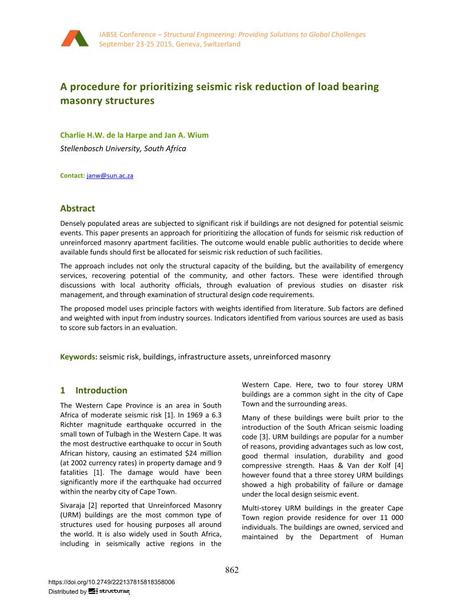A procedure for prioritizing seismic risk reduction of load bearing masonry structures

|
|
|||||||||||
Détails bibliographiques
| Auteur(s): |
Charlie H. W. De La Harpe
(Stellenbosch University, South Africa)
Jan A. Wium (Stellenbosch University, South Africa) |
||||
|---|---|---|---|---|---|
| Médium: | papier de conférence | ||||
| Langue(s): | anglais | ||||
| Conférence: | IABSE Conference: Structural Engineering: Providing Solutions to Global Challenges, Geneva, Switzerland, September 2015 | ||||
| Publié dans: | IABSE Conference Geneva 2015 | ||||
|
|||||
| Page(s): | 862-869 | ||||
| Nombre total de pages (du PDF): | 8 | ||||
| Année: | 2015 | ||||
| DOI: | 10.2749/222137815818358006 | ||||
| Abstrait: |
Densely populated areas are subjected to significant risk if buildings are not designed for potential seismic events. This paper presents an approach for prioritizing the allocation of funds for seismic risk reduction of unreinforced masonry apartment facilities. The outcome would enable public authorities to decide where available funds should first be allocated for seismic risk reduction of such facilities. The approach includes not only the structural capacity of the building, but the availability of emergency services, recovering potential of the community, and other factors. These were identified through discussions with local authority officials, through evaluation of previous studies on disaster risk management, and through examination of structural design code requirements. The proposed model uses principle factors with weights identified from literature. Sub factors are defined and weighted with input from industry sources. Indicators identified from various sources are used as basis to score sub factors in an evaluation. |
||||
| Mots-clé: |
bâtiment
|
||||
